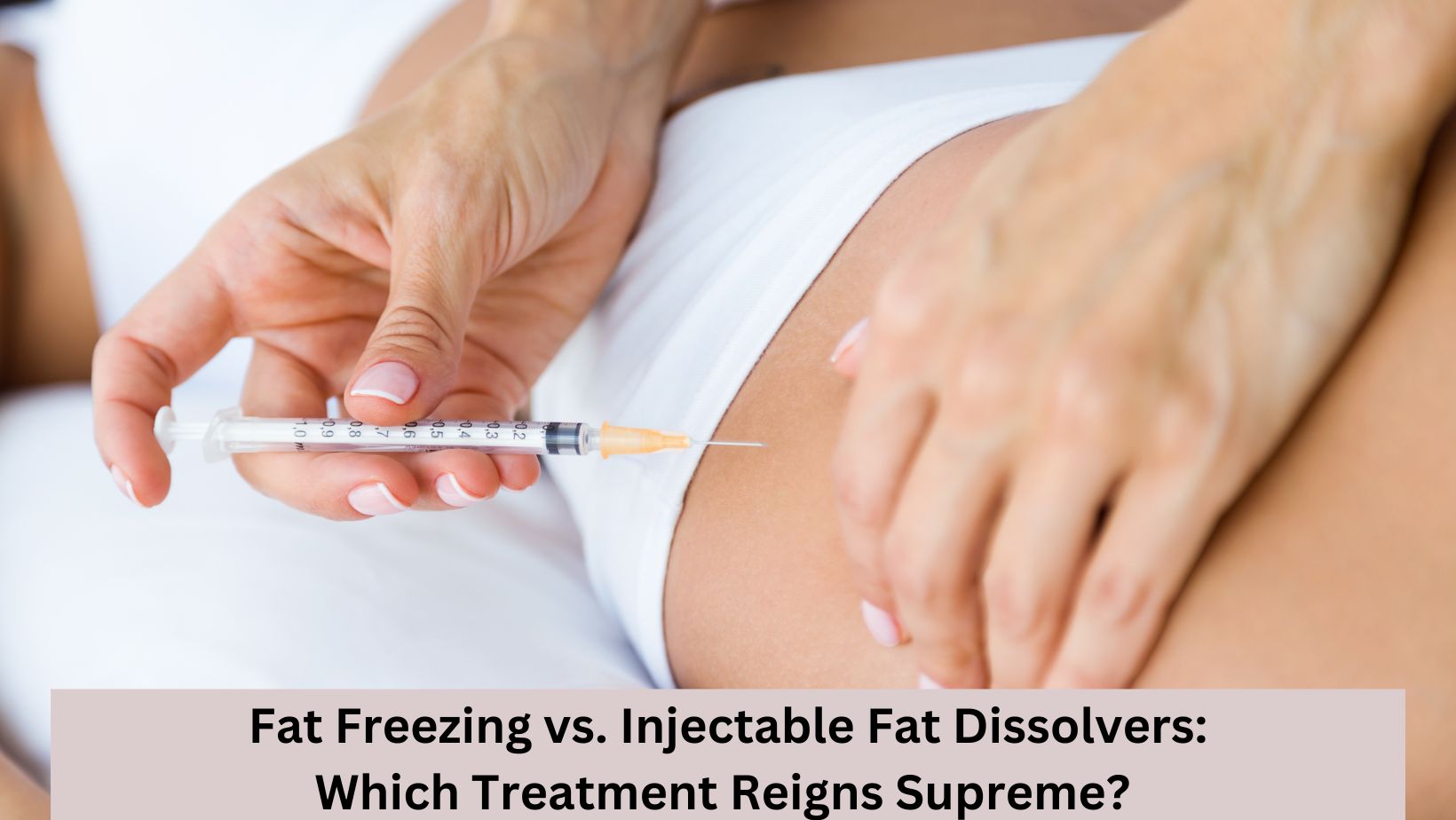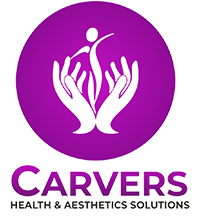
Fat Freezing vs. Injectable Fat Dissolvers: Which Treatment Reigns Supreme?
At Carvers, we understand the growing demand for non-invasive fat reduction treatments. Whether it’s stubborn belly fat, love handles, or double chins, many individuals seek effective ways to sculpt their bodies without going under the knife. Two popular procedures gaining attention in the body contouring industry are Fat Freezing (also known as Cryolipolysis) and Injectable Fat Dissolvers. But how do these treatments stack up against each other? Let’s dive into the details to help you determine which option may reign supreme for your body contouring goals.
What is Fat Freezing?
Fat Freezing, scientifically known as Cryolipolysis, is a non-invasive procedure that targets and eliminates fat cells by exposing them to freezing temperatures. This treatment was first made famous by the CoolSculpting brand and has since evolved into a widely available and highly effective fat reduction method.
An applicator is applied to the desired location throughout the operation, and it cools the fat cells to a point where they freeze and die. Over the following weeks, the body naturally eliminates these dead cells through the lymphatic system.
What are Injectable Fat Dissolvers?
Injectable fat dissolvers, on the other hand, are substances that are injected directly into the fat layer under the skin. Deoxycholic acid is one of the most common compounds used, and it works by breaking down the fat cell membranes, causing the cells to die. The body then processes and eliminates the destroyed fat cells over time.
This method is commonly used for smaller areas of stubborn fat, such as under the chin or on localized fat deposits that are resistant to diet and exercise.
Comparing the Two Treatments
While both Fat Freezing and Injectable Fat Dissolvers are designed to eliminate stubborn fat pockets, they differ in their mechanisms, application, and outcomes. Let’s compare the two treatments across various factors:
- Mechanism of Action
Fat Freezing: Involves freezing fat cells to the point of apoptosis (cell death). The body’s lymphatic system then gradually gets rid of the frozen cells.
Injectable Fat Dissolvers: Involves injecting a chemical solution that breaks down fat cells, allowing the body to absorb and expel them.
- Target Areas
Fat Freezing: This procedure is ideal for larger areas like the abdomen, thighs, arms, back, and flanks (love handles). The cooling panels can treat areas of fat that can be pinched between them, making it suitable for broader areas of the body.
Injectable Fat Dissolvers: This method is generally used for smaller, more localized areas of fat. It’s especially popular for treating double chins and minor fat pockets on the arms or lower belly. It’s a fantastic option for those who have tiny, recalcitrant fat deposits.
- Invasiveness and Pain
Fat Freezing: Fat freezing is non-invasive, meaning there are no needles, incisions, or anesthesia involved. Patients typically experience a cold sensation and numbness in the treated area but no serious pain. Discomfort may occur due to the suction applicators but usually subsides after a few minutes.
Injectable Fat Dissolvers: Injectable treatments involve multiple injections in the targeted area. The injections themselves can be uncomfortable, and there may be some post-treatment swelling and tenderness as the body metabolizes the destroyed fat cells.
- Downtime and Side Effects
Fat Freezing: Fat freezing requires minimal to no downtime. Although some redness, bruising, or swelling at the treatment site is possible for some people, these adverse effects usually go away in a few days.
Injectable Fat Dissolvers: While generally safe, injectable fat dissolvers can cause swelling, bruising, and tenderness in the treated area, especially for larger treatment zones. Some people may experience temporary numbness or hardness under the skin as well. Swelling can last for a week or more, depending on the size of the treated area.
- Results and Timeframe
Fat Freezing: Results from fat freezing become noticeable over time, usually around 3 to 12 weeks after treatment. The body needs time to naturally remove the frozen fat cells. Several sessions may be necessary to achieve the intended results.
Injectable Fat Dissolvers: Results from injectable fat dissolvers are not immediate. Several sessions may be necessary to achieve the intended results. Typically, 2 to 4 sessions spaced a few weeks apart are needed to see significant improvement.
- Treatment Duration
Fat Freezing: Each session of fat freezing takes around 35 to 60 minutes per area. However, larger areas might require multiple sessions.
Injectable Fat Dissolvers: Treatment times for injectables are relatively short, ranging from 15 to 30 minutes. However, since multiple injections are required, you may need more than one appointment to achieve your desired look.
- Longevity of Results
Fat Freezing: Fat cells removed by Cryolipolysis are permanently eliminated from the body. However, maintaining a stable weight post-treatment is important, as remaining fat cells can still expand if weight gain occurs.
Injectable Fat Dissolvers: Similar to fat freezing, injectables permanently eliminate fat cells once they are dissolved. To stop new fat from accumulating in regions that haven’t been treated, it’s imperative to continue leading a healthy lifestyle.
Which Treatment is Right for You?
When deciding between fat freezing and injectable fat dissolvers, several factors come into play:
Treatment Area: For larger areas of fat, fat freezing may be a more practical option. For smaller, more localized areas, injectables could be the better choice.
Pain Tolerance: If you’re sensitive to needles or injections, fat freezing may be the more comfortable option, as it’s completely non-invasive. However, if you’re comfortable with injections and looking for more targeted results, injectables could be worth considering.
Time Commitment: If you prefer shorter treatment sessions, injectables may be a better fit. However, fat freezing offers non-invasive treatment with minimal discomfort, even if the sessions are longer.
Cost: Fat freezing generally covers larger areas in a single session, while injectables may require multiple treatments for smaller areas. Consult with professionals at Carvers for a more specific cost breakdown based on your needs.
Conclusion
Both Fat Freezing and Injectable Fat Dissolvers offer effective solutions for reducing unwanted fat without the need for surgery. While neither method is a substitute for a healthy lifestyle, these treatments can help eliminate stubborn fat that resists diet and exercise.
